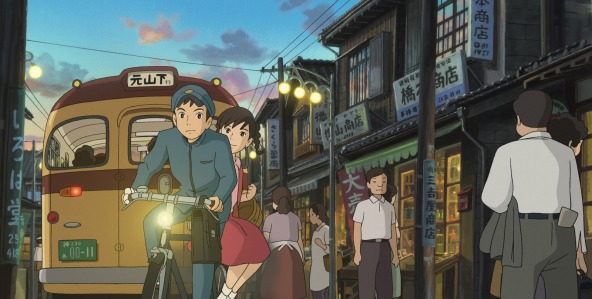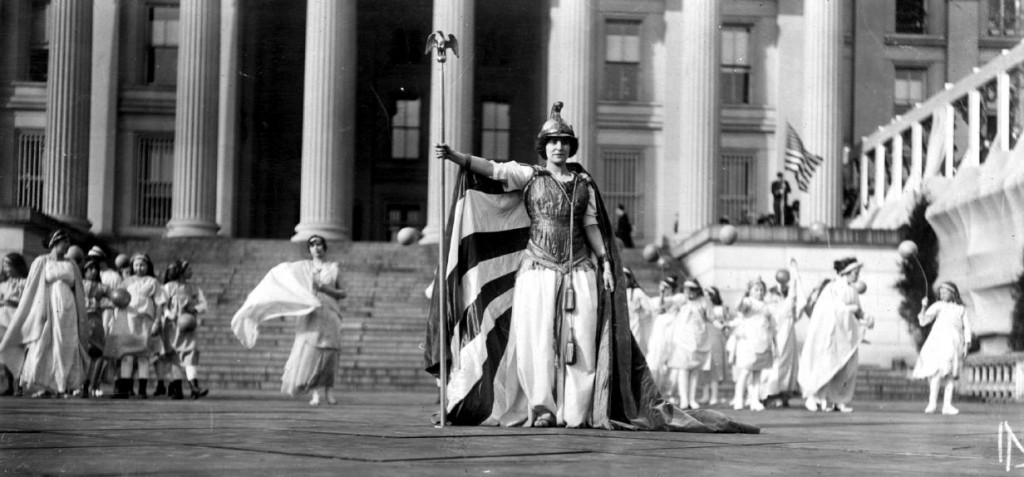For episode 3 of our podcast “An Embarrassment of Prog,” musical genius/obsessive Charlie Nieland shared his personal map of Yes’s four-sided magnum opus. If you’re listening to the record and feel like a little navigational charting of its many currents might be an aid to appreciating what “Tales” has to offer, look no further, but follow along with Charlie’s guide to the various themes and musical ideas as they are introduced, varied and reprised. At the end you’ll find a handy time-stamped rundown of the major themes as well. Enjoy!
From Charlie Nieland:
Yes’s Tales From Topographic Oceans can seem like an unending series of ideas coming at you, but what I’ve found with many listens is that there’s a tapestry of melodic themes that gives it shape; they come and go in different ways throughout all four sides. I’m always hearing more after years of listening; this is the first time I’ve tried to write them down.
These themes bring focus to what can sound like a lot of noodling and the dreaded “padding” that Tales is accused of. But for me, they yield incredible enjoyment. Yes is brilliant at call and response and they are doing it at a very deep level on Tales. It’s a musical conversation that continues throughout the 80 minutes.
This may help you enjoy the music or it may not. YMMV. I’ve read the arguments, even from fans, that the melodies are dumb and it’s not interesting that they are woven everywhere. But I think it’s what makes this a work of art. You can tell that much of it is pushed by Howe and Anderson. Those simple melodies give wonderful contrast and familiarity as they are incorporated into thematic movements via Anderson’s voice and Howe’s deft guitar phrasing. It gives the whole thing an emotional pull that all the members dig into, Squire, White and Wakeman, included.
ANYWAY, I’ve given the themes nicknames that may be confusing but this is, by definition, a work in progress. For example, in Revealing; Triumph: 01:36; Flutter 01:58; Steps: 05:00, Imperial guitar melody 12:34, etc.
I know there are even more resemblances and similarities than these. We’ll keep listening…
Tales Musical Themes
Revealing Science Of God – Dance Of The Dawn (side 1)
Opening Chant – hypnotic mantra reprised at the end of the song
Volume pedal guitar notes underneath hint at coming main Triumph theme, which arrives, synth-fueled, along with the full band at the climax of the Chant
Main guitar Flutter theme established, woven with moog ornamentation, the jumping intervals of which are recalled later at the end of “Ritual” (side 4)
Bass and drum punctuation theme established, followed by the bass line from They Move Fast at the introduction of
Talk to the Sunlight Caller vocal melody, itself a preview of the Out in the City theme later introduced in “The Remembering” (side 2) and developed into the Nous Sommes guitar theme from “Ritual”, followed by
1st introduction of Steps melody on guitar (stepwise major scale; short-short-long-long-long, etc.) leading into
What Happened To This Song — 1st verse/chorus song section – anthemic
The first descending notes of the chorus melody, “What happened…”, So-Fa-Mi, long-short-long, is a foundation that is further developed in the Imperial guitar theme, later in “Revealing”, and even more in the High the Memory and Relayer vocal melodies in “The Remembering” (side 2).
Steps melody developed more thoroughly on guitar in the break after each chorus
Starlight section – dark, tribal, electronic transitional passage with intense guitar – the last break briefly alludes to upward melody in Ritual guitar theme (side 4), followed by Steps melody featured on gentle volume pedal guitar, followed by a quiet refrain of the Triumph theme and then Steps on big Mellotron chords leading to
They Move Fast – verse/chorus song – uplift tinged with melancholy – much of this section is in ¾
The second occurrence of the They Move Fast vocal melody is underpinned by the Ritual guitar theme (side 4) playing counterpoint underneath
Skyline Teacher passage (recap of Starlight) – piano lick quotes “Heart Of The Sunrise” (from Fragile)
Instrumental break – this energetic guitar-led section has its own themes based around a three-against-four rhythmic phrase heard in Starlight and Skyline, with modulating step-wise melodies building to a solo that climaxes with the Imperial guitar theme, a recurring, descending/ascending motif – (So-Fa-Mi-Re, long-short-short-long; this theme resembles the descending High The Memory vocal melody). It is answered with a briskly strummed Steps theme recalled as the section concludes — then Steps melody walks gently up to
Old Fighter’s Past – verse/chorus song – quiet, contemplative – Minor key sitar melody intro (with Major moog melody played on Mellotron underneath) then the Major moog melody is established, leading into each verse
Steps melody on guitar answers lines in 2nd verse “Young Christians see it”
Gentle Triumph theme on volume pedal guitar quote under final ”Old Fighter’s Past” vocal phrase leads to
Steps melody big time mellotron break
Then modulated, more Steps building with vocals – answered with Pentatonic Synth melody from “The Ancient” (side 3) and a fragment of Flutter guitar melody then
Big Keyboard solo starts with Major moog melody from Old Fighter’s Past and ends with rhythmic themes from Imperial guitar theme break
Walk back through sections, building up: They Move Fast recap – with Ritual guitar theme, then Flutter melody –climaxing with What Happened chorus vocal return – winding down with Chant return from intro (alongside Steps theme on volume pedal guitar)
The Remembering – High The Memory (side 2)
Intro – pipe organ arpeggios reminiscent of future song “Awaken” (from 1977 album Going For the One)
Silence Of Seasons song — pastoral – guitar and vocal theme are a derivation of Steps melody
High The Memory vocal melody – kind of a one-time-only chorus – joyful – a derivation of Imperial guitar theme, and What Happened vocal melody. These two sections, in a slow 7/8, are subtly recalled, much faster in the Relayer theme later in “The Remembering”
Keyboard break – brief preview of Out In The City melody
Ours The Story elegiac song section — the descending melody is later incorporated as a bassline in the Don the Cap section followed by
Alternate Tune theme
– containing a return of side 1’s They Move Fast, and it’s 3/4 feel; they cycle twice, gradually building to
Out In The City vocal theme – then answered by the Stand On Hills vocal theme
– act as a new triumphant song section
Ritual guitar theme (side 4) directly quoted, but gently baroque with guitar and pipe organ, in the transition to first dreamy keyboard cloud section
Silence Of Seasons and Out In The City vocal recap then
sweeping ethereal modulating ambient transition leading to
Remembering Keys dreamy theme, which alludes to High The Memory and the Imperial guitar theme. Hard cuts to
Don the Cap song — jangling Celtic reel – transitions out with Imperial guitar melody, leading to
Relayer song – This is a powerful re-interpolation of the Silence Of Seasons (listen for the 7/8) in a circular crunchy guitar riff that recalls the first phrase of the Remembering Keys theme, set against a driving rhythm section. The vocal melody for the Relayer hook is Mi-Fa-So and back down Fa-Mi-Re, creating the same melodic color as High The Memory. It goes around twice with Don The Cap (both sections getting respectively softer then louder) before the powerful keys/guitar solo that recaps the actual Silence Of Seasons melody over fantastic bass and drums. Then climaxing with the Relayer vocal melody returning on keys as it crashes back into Stand On Hills
Extended Keyboard break – ambient swirling modulations, layered with guitar and bass
After the extended keyboard sequence, the final big return of Ours The Story (“Ours entrance we surely carry on”) into
Big time revisit of They Move Fast as They Move Time/Rainbows/Alternate Tune, with a brief recall of Bass and Drum punctuation and Flutter guitar themes from “Revealing” (side 1) before final vocal climax with Rainbows/Alternate Tune and one more flash of Flutter guitar to start the final solo
Remembering Keys theme end
The Ancient – Giants Under The Sun (side 3)
Intro – Marching Cymbals play Big punchy stops rhythm
1st slide guitar – establishes Ancient Triplet theme
Electric Guitar break foreshadows Angular theme
Ancient Triplet theme 2 leads to first instance of
Big punchy stops
under expansive mellotron chords
As One With The Knowledge vocal melody arrives over chords, echoing Flutter theme (side 1)
Pentatonic Synth theme established – Sweeping motif over processional march with bass and drum punctuation
Big punchy stops — guitar throws in descending lick from the Flutter theme
and lick from “Siberian Khatru” (from Close to the Edge)
Pentatonic theme continues
Big punchy stops – guitar throws in Angular theme
Sun Theme section – urgent 6/4 time with guitar/melloton recalling “I just can’t believe they really mean to” vocal melody from They Move Fast (side 1), alternates with Sun chant vocal theme and Ancient Pentatonic Synth/tron theme
Angular theme, full band, appears briefly and only once
Sun Theme continues, ending with single punchy stop into transition featuring high repeated bass note, gong/bell and tense mellotron strings
Out In The City and Steps melody quoted by guitar in the transition
Electric guitar solo – expansive 3 part cycle, getting weirder and more intense – featuring slide then conventional electric
The Ritual guitar theme (side 4) can be heard in the ascending phrases of the first part of the guitar solo; Flowering Creativity theme is gradually hinted at, and then fully stated at the climax of the solo, which finally comes to rest with punchy stops.
Flowering Creativity vocal theme introduced with acoustic guitar after the ending of the solo, sounding very medieval
Classical Guitar theme established – the opening melody has similar upward stepwise motion to the first phrase of Ancient Triplet theme and features a quick quote from Close To The Edge (Thanks to Joey Wise for pointing this one out in the Yes Facebook discussion group)
Leaves Of Green song arrives – acoustic melancholy hymn
Classical Guitar theme recapitulated
Slide guitar transition—joyful recap of Triplet theme 2
Big stops return for end, final upward guitar hints at upcoming Ritual guitar theme
Ritual – Nous Sommes Du Soleil (side 4)
Bass Intro based on Ritual vocal chant theme
Ritual guitar theme introduced (arpeggiated melody related to Steps theme)
Punctuation theme on bass and drums and Steps theme on keys from “Revealing” (side 1) underneath
Answered with Out in The City theme on keys
Ritual vocal chant theme established — joyful wordless vocal melody – Drum pattern reminiscent of the Relayer theme from “The Remembering” (side 2) – now in a compound meter, 5/4, 5/4, 6/4, 7/4. Finished off with brief fiery bass break.
Spacey transitional section—sequence of LOTS of themes on guitar—Steps, Minor Old Fighter’s Past, Close To The Edge, Pentatonic Ancient, Ritual guitar theme, Flutter, Triumph, Imperial, Out In The City themes morphing into
Nous Sommes guitar theme introduced, derived from Out in the City theme
Nous Sommes Du Soleil vocal theme established, building to
Life Seems like a Fight
verse/chorus song section – wistful sitar-drenched Beatlesque pop song
Triumph theme as a bridge before 2nd verse “maybe we’ll just stand a while”
Soul Constant/At All coda crescendo leads to
Bass theme return, then propulsive bass solo based on Ritual vocal chant—breaks it up with a quote of Ancient Triplet theme
Guitar enters with Silence Of Seasons melody and its own intense solo over tension-building chord changes leading to a hard stop climax. Hard cuts to
Drum War — two-part section, cycles twice, featuring constant 8th note metallic strikes with Indonesian gong punctuations. First section features a drum kit solo; second section is a driving tribal groove for tympani and kit. There’s a purely rhythmic restatement of the Flutter theme in the first phrases of the drum-triggered synth in the second half (Thanks to Peter Smorodin for pointing this one out in the Yes Facebook discussion group)
The big rhythm motif at the finish is derived from the Ancient Triplet theme
Gentle guitar solo transition out — descending Flutter theme, rising Ritual guitar theme (maybe a little Ancient?), arriving at Nous Sommes guitar theme
Nous Sommes vocal theme returns now a gentle verse/chorus song with some extra development
Piano motif that answers “And course our way back home” and the final Nous Somme Du Soleil vocal refrain recalls the Pentatonic Synth theme from “The Ancient” (side 3)
High piano notes also recall the moog ornamentation from the beginning of “Revealing” (side 1)
Finale – guitar climax revisiting Ritual guitar theme, Flutter theme, Steps theme over angular modulations that recall the chord changes under the solo before the Drum war
Minor key ending with a final little volume pedal guitar hint of Steps melody
Footnote: What Happened To This Song, Imperial guitar theme, High The Memory, Remembering Keys theme, Nous Sommes Du Soleil vocal theme are all related via a phrase in common: downward stepwise melody, So-Fa-Mi-Re, with a long, shot, short, (long) note duration
Time Index:
The Revealing (Original version – without newer extended intro):
Opening Chant: 00:00
Triumph: 01:36
Bass And drum punctuation theme: 01:55
Flutter: 01:58
Talk To The Sunlight Caller: 03:04
What Happened To This Song section: 03:35
Steps: 05:00
Starlight: 06:52
They Move Fast Song section: 09:45
Skyline Teacher: 11:07
Imperial guitar melody: 12:34
Old Fighter’s Past Song section – minor key sitar melody: 13:04
major moog melody: 13:48
Moog solo: 16:40
They Move Fast recap: 17:39
Flutter return: 18:58
What Happened return: 19:05
Final Chant: 19:44
The Remembering:
Intro Pipe Organ: 00:00
Silence Of Seasons Song; guitar and vocal theme: 00:14
High The Memory vocal melody: 01:34
Ours The Story vocal theme: 02:36
Alternate Tune theme (”they move fast”): 03:04
Stand On Hills vocal theme (I reach over…): 05:41
Out In The City Vocal theme: 06:09
Remembering Keys theme: 08:11
Don the Cap: 09:14
Relayer Theme: 10:42
Extended Ambient Keyboard: 15:48
Ours the Story/Alternate Tune Return: 17:40
Final Keys Theme: 19:53
The Ancient:
Intro Cymbals: 00:00
Ancient Triplet theme: 00:47
Ancient Triplet theme 2: 03:00
Big punchy stops: 03:41
As One With the Knowledge: 04:17
Pentatonic Synth theme: 04:41
Sun Theme: 06:08
Angular theme: 07:04
Guitar Solo: 09:01
Flowering Creativity theme: 12:31
Classical Guitar theme: 12:53
Leaves Of Green song: 14:42
Classical Guitar theme recap: 17:04
Triplet Theme 2 Recap: 17:45
Ritual:
Bass Intro: 00:00
Ritual guitar theme: 00:19
Ritual vocal chant Theme: 01:46
Spacey many themes guitar transition: 04:03
Nous Sommes guitar theme: 05:26
Nous Sommes vocal theme: 05:30
Life Seems like a Fight song: 06:50
Soul Constant/At All Coda: 09:45
Bass Solo: 11:11
Guitar Solo: 13:35
Drum War: 14:21
Nous Sommes return song section: 17:40
Finale: 19:57
Copyright @2023-2024 Charlie Nieland
Reproduced here by permission of the author, All Rights Reserved


 Lace up your fringed boots, grab your favorite woodwind and your ticket for the Renaissance Faire: this week, Charlie, Henry, and Bill dive into the anti-cool heart of prog rock via a pair of mid-70s Jethro Tull masterworks: 1974’s “War Child” and 1975’s “Minstrel in the Gallery.” Turning from the hyper-extended musical excursions of “Thick as a Brick” and “A Passion Play,” the band’s return to song is also an introduction of spikier melodies and tighter conceptions. Discussed: dressing in doublet and hose, loving (or hating) the movie Time Bandits, a word to the wise about choosing “Bungle in the Jungle” at Karaoke, and an alternate universe in which a certain glam rock icon replaced Ian Anderson on vocals.
Lace up your fringed boots, grab your favorite woodwind and your ticket for the Renaissance Faire: this week, Charlie, Henry, and Bill dive into the anti-cool heart of prog rock via a pair of mid-70s Jethro Tull masterworks: 1974’s “War Child” and 1975’s “Minstrel in the Gallery.” Turning from the hyper-extended musical excursions of “Thick as a Brick” and “A Passion Play,” the band’s return to song is also an introduction of spikier melodies and tighter conceptions. Discussed: dressing in doublet and hose, loving (or hating) the movie Time Bandits, a word to the wise about choosing “Bungle in the Jungle” at Karaoke, and an alternate universe in which a certain glam rock icon replaced Ian Anderson on vocals.
